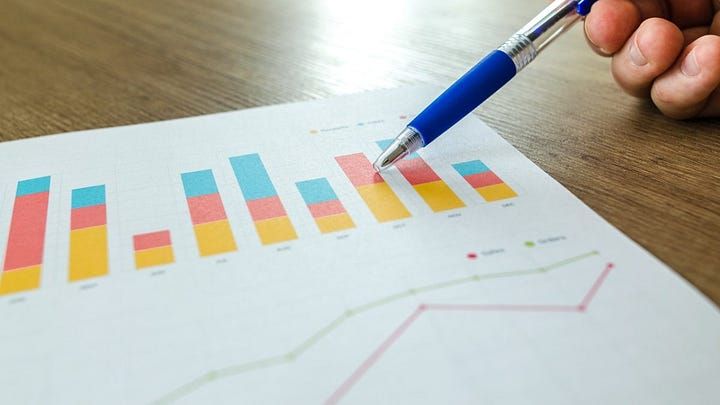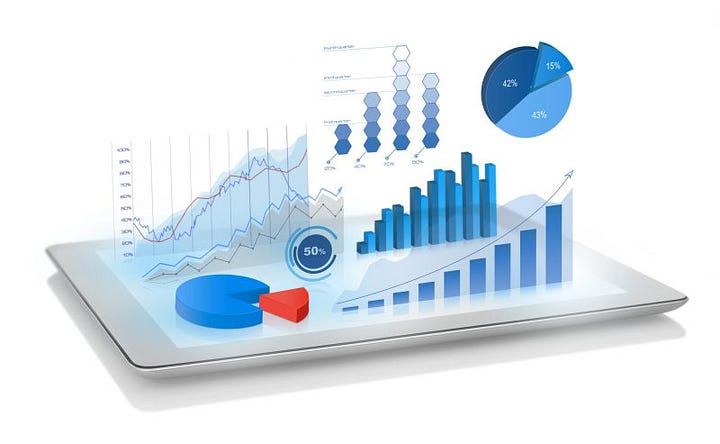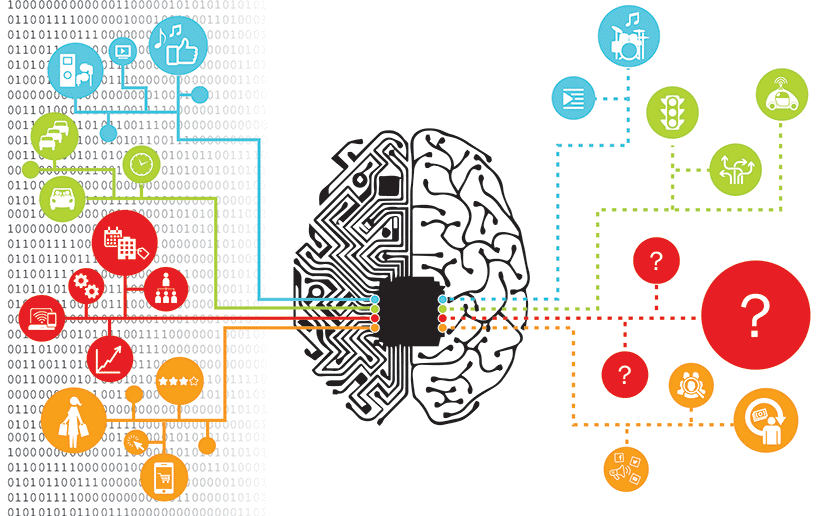Data analytics and it’s benefits: in simple words

Data is the driving factor of any business. It provides insights into the current state of the company but today, due to the development of technology, it can also be used for future forecasts and recommendations.
There are four types of data analytics, going from the simplest to the most complex one. Depending on the type of your company, you don’t have to use all four; nevertheless, you should know about all types of analysis in case you will need it in the future.
Descriptive analytics

Question answered: What happened?
The first stage of the data processing is descriptive analytics, which, as the name states, describes what’s going on in your business and what happened in the past. This type of analysis does not require advanced technologies or skills: you will need a Business Intelligence expert or data analytics in order to analyze the available data.
In order to perform a successful descriptive analysis, one has to:
- Set the desired goals
- Determine business metrics towards these goals and establish KPIs (key performance indicators)
- Collect the data and process it with descriptive analytics techniques (to avoid data duplication, errors, etc.)
- Data experts will perform the data analysis
- Data will be visualized as a graph or chart to be displayed and understood.
Examples of descriptive analytics: a retailer wants to know about the sales for the past month or a hotel wants to know about the most popular suites.
Diagnostic analytics

Question answered: Why something happened?
This type of analytics helps you measure the historical data against other historical data and find certain behavior patterns, dependencies or anomalies. In order to find the answer to the question, data analysts will have to draw information from external sources as well. As soon as all the required data is at their disposal, the analysts will be able to compare it and find the answer.
Some of the diagnostic analytics techniques:
- Regression analysis
- Filtering
- Probability theory
Examples of diagnostic analytics: a retailer would learn which age group buys a certain product the most.
Predictive analytics

Question answered: What is likely to happen?
Predictive analytics is a more complex type of data analysis as it does not rely solely on information from the past but aims to forecast what will happen in the future. This type of analytics is extremely popular in such industries as finance and healthcare as future forecasts may at times play a crucial role in the well-being of a company and its clients.
While predictive analytics uses massive sets of historical data to build the forecast upon, it requires the use of advanced technologies to identify hidden patterns in the data that would help build a reliable predictive model. It’s important to remember, though, that predictive analytics is an estimate, not an ultimate answer, and the quality of predictive analysis depends on the quality of the data, the stability of situation and other factors.
Tools for predictive analytics:
- Machine learning
- Data mining
- Neural networks
- Logistic regression
- Statistical analysis
Examples of predictive analytics: a lending company wishes to know the reliability of the borrowers or the retailer wants to know what products would be in the highest demand.
Prescriptive analytics

Question answered: What action should I take?
Prescriptive analytics is the most complex type of analytics as it suggests the best solution, based on the data and forecast provided by predictive analytics. Same as with other data analysis types, prescriptive analytics requires data from external sources in order to build a more accurate prescription.
Because this type of analysis requires sophisticated analytics tools and domain experts, a company should evaluate whether the outcome would compensate for the expenses.
Tools for prescriptive analytics:
- Machine learning
- Business rules
Examples of prescriptive analytics: a retailer can identify the best opportunity to sell a certain product.
Final thought
As stated above, the type of data analysis that you choose depends on your business solely: its size and type, the business goals you wish to achieve, your plans for the future.
The descriptive and diagnostic analysis are reactive types, meaning they are conducted after something has already happened. Predictive and prescriptive analysis are proactive and allow companies to prevent unwanted situations and manage their performance better.
While not all companies need to go deep in their analysis, numerous researches show that more companies start adopting advanced data analytics in response to the ever-changing business environment.
In the end, an average modern business already stores a lot of data, so why not use it? Most often the ROI in data analysis tools appears to be far beyond one’s expectations.